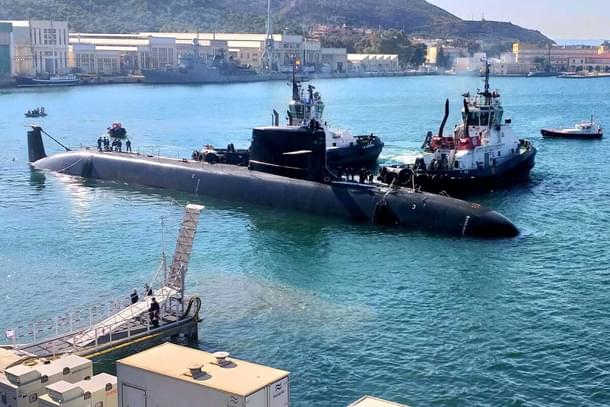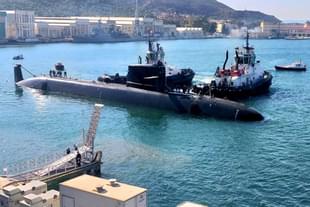Defence
Project-75I: Spain's Navantia And L&T Team Up For Manufacturing Next Generation Attack Submarines
Ujjwal Shrotryia
Jul 10, 2023, 04:58 PM | Updated 04:58 PM IST
Save & read from anywhere!
Bookmark stories for easy access on any device or the Swarajya app.


In a significant development, Larsen and Toubro (L&T) signed a pact with a Spanish shipyard Navantia to jointly bid for the Indian Navy's $5.6 billion Project-75I next-generation diesel-electric stealth submarine.
Under the Project-75I, India plans to procure six next-generation air-independent propulsion (AIP)-equipped diesel-electric submarines.
According to reports, Navantia will be offering S80-class submarines, which are essentially enlarged variants of the French scorpene-class submarines.
The Indian Navy already operates six scorpene class submarines, known as Kalvari-class in the Indian Navy's service. There are reports that India may buy additional three scorpene submarines when Prime Minister Narendra Modi visits France from 13 July-14 July, as well.
The L&T-Navantia duo will likely compete against state-owned Mazagaon Docks Limited and German Thyssenkrupp Marine Systems' offering of U-214 submarines, a memorandum of understanding of which, was signed when German Defence Minister Boris Pistorius visited India on 7 June.
Another offering is expected from the Korean shipyard Daewoo Shipbuilding and Marine Engineering. They are offering the 3,000-tonne Korean attack submarines (KSS-III) to the Indian Navy.
The French and the Russians have, however, pulled out from the project citing their inability to meet the Indian Navy's stringent technical requirements.
The Indian Navy has stipulated a requirement of an operational AIP system with the competitors for the P-75I project. The Russians do not have a submarine equipped with AIP, while the French Navy do not operate diesel-electric submarines at all.
It remains to be seen how the L&T-Navantia duo plans to qualify for the project since among all the competitors, only the Germans and the Koreans have an operational AIP system.
An air-independent propulsion system, as the name suggests, allows the submarine to remain submerged in the sea, independent of atmospheric air, for long-periods of time, some times as long as three weeks.
A diesel-electric submarine, without AIP, has to come close to the surface of the ocean to gather oxygen to run its diesel generators.
The diesel generators recharge the battery of the submarine. With the help of batteries, the submarine can remain submerged for three days to a week, depending on the speed of the submarine.
The process of coming close to the surface of the ocean also makes the submarine vulnerable to detection by the enemy. The AIP removes the need of the submarine to come to the surface, making it extremely hard to detect.
Staff Writer at Swarajya. Writes on Indian Military and Defence.





